Every Drop Counts: Water Conservation Starts With Us
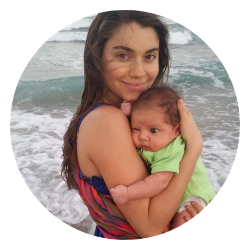
Written by: Brielle Murch
Water is the foundation of all life. We all came from the water, the ocean being the womb of Mother Earth.
Without the proper amount of fresh water, we would not be able to grow food, hydrate our bodies, breathe viable oxygen, and live a life on this beautiful planet.
Many think water is an endless resource. Yet, while the Earth is about 70% water, only 2.5 percent of it is freshwater that can be consumed. The rest is saline and ocean-based, which can now be filtered for drinking... However, the desalination process is still extremely expensive and inefficient.
Even then, only 1% of our freshwater is easily accessible, with much of it trapped in glaciers and snowfields. A lot of available freshwater is also being affected by saltwater intrusion due to sea-level rise, and once saltwater mixes with freshwater, it becomes non-potable. Therefore, we need to be mindful of the water we consume every day.
Fortunately, there are ways we can immensely reduce our water footprint: Here's three ways you can conserve your water usage and consumption, and guarantee there will be plenty of water on this beautiful planet for generations to come!
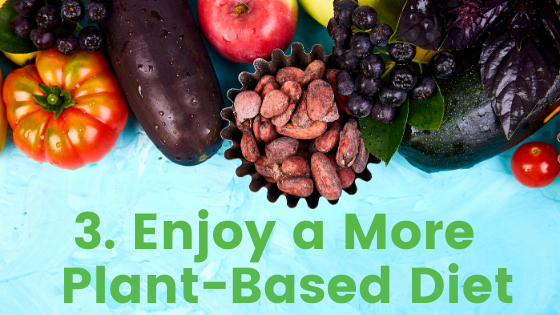
Animal Agriculture uses a frightening amount of our freshwater... Not only for the animals to drink, but to grow their feed and also to clean the machinery. Animal agriculture water consumption ranges from 34-76 trillion gallons annually. To put it into a more fathomable perspective, growing crops for livestock feed alone consumes 56% of water in the US. So next time you have the option to choose a veggie burger or beef burger, try to remember the harm a beef burger causes to our planet in many ways.
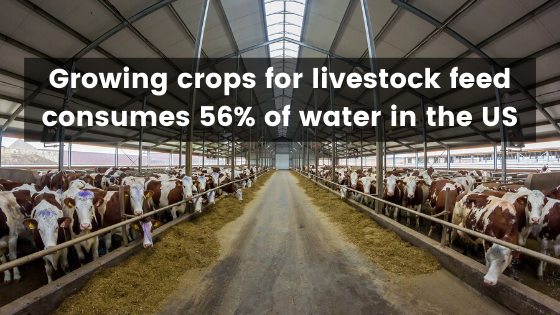
Did you know that 2,500 gallons of water are needed to produce only 1 pound of beef? Not only is the water consumption of animal agriculture truly sickening, this industry also pollutes our freshwater by releasing such large amounts of unmanaged animal waste from the factory farms, that they leach into the water supply; creating eutrophication. Eutrophication is where algae plants are over-fertilized by the manure and urine in the water and overgrow, creating an imbalanced ecosystem. They are also known as algae blooms.
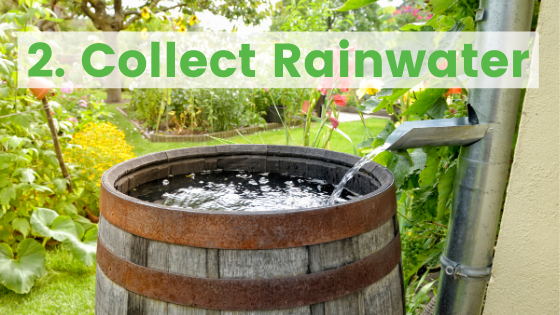
Rainwater is a gift and a resource we need to utilize. 30 to 60% of domestic drinking water is used for watering yards and gardens, and often large portions are wasted by over-watering, evaporation, and misdirected sprinklers that water sidewalks and driveways.
Using city water to water our lawns and gardens is not regenerative thinking, as it's usually taken from the local well and aquifers. These sources need to stay replenished for drinking water. These are also the sources that are being affected by sea level rise and saltwater intrusion.
The best way to water our gardens and lawns is from catching rainwater to reuse again! Installing a rain barrel under your roof gutters does all the work for you.

Additionally, large grass lawns consume a lot more water than if you plant out a garden. Rather than having a bland grassy lawn that also consumes toxic, synthetic pesticides, it would also be extremely beneficial to plant a veggie patch or food forest instead!
The design of a planted garden instead of a lawn conserves water since the soil will be more healthy, structured and filled with life! If you have an irrigation system, using a drip irrigation delivery is the most effective way to use the water you catch.
Don’t overwater your lawn or water during peak periods, and install rain sensors on your irrigation systems. Your garden also catches stormwater runoff from your roof, driveway, and other hard surfaces; helping prevent pollution. 663 million people on our planet do not have access to safe, clean drinking water. We need to make a change!

A dual flush toilet lowers water usage in your home, thereby saving money on your monthly water bill as well as helping the planet. The Environmental Protection Agency (EPA) estimates that 4,000 gallons of water can be saved annually in a residential household that employs dual flush toilets.
Dual flush toilets bear their namesake because of the two (dual) setting mechanism that drives their operation. This two-setting mechanism is usually a button or a lever on the toilet that allows you to flush either a low volume flush, or a high volume flush. Low volume flushes are designed for liquid waste, while high volume flushes are designed for solid waste.
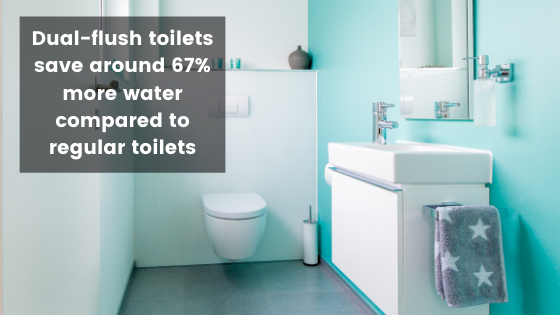
With a normal flow toilet, 1.6 gallons of freshwater is flushed down with your urine and feces into our waterways. It is truly not an efficient or smart system. Compared to regular toilets without a volume option, dual-flush toilets save around 67% more water.
The best system for our waste management is called a compost toilet. This doesn't use any water, and recycles our waste into nutrient-dense soil. This is the way we were meant to dispose of our bodily waste; into the earth, not into our planet's precious water. They do require having some land outside and some knowledge on how to build, manage and harvest the soil... So in the meantime, switching your toilet to a dual-flush or low-flow system, or installing a converter kit on your existing toilet is an easy and extremely effective method of conserving water every day!
All three of these shifts will reduce your water footprint in drastic ways. They all do require some effort and time to implement, but are definitely worth it in the long-run as they will also save you money on your water bills, and be more beneficial to your health!

Pro Tip: Do your part in the water conservation effort by using a reusable tumbler like The Beast, to cut down on water that is wasted in the production of single-use plastics!
Although these are three of the main ways I would recommend reducing the highest amount of water consumed in your daily life, there are lots of other simple things you can do to minimize your water usage over the course of your day.
The simple acts of turning the faucet off while brushing your teeth, and waiting for a full load before doing laundry or putting on the dishwasher! Another cool thing you can try to bring awareness to where you're using the most water in your home, is monitor your water usage on your water bill and ask your local government about a home water audit. By seeing a visual representation of what is consuming the most water in your home, you can then focus on where to first implement change with actual passion and facts behind your motive!
Infinite Love & Light... We are the ones!

Brielle Murch | Everything Earth Tribe




Leave a comment